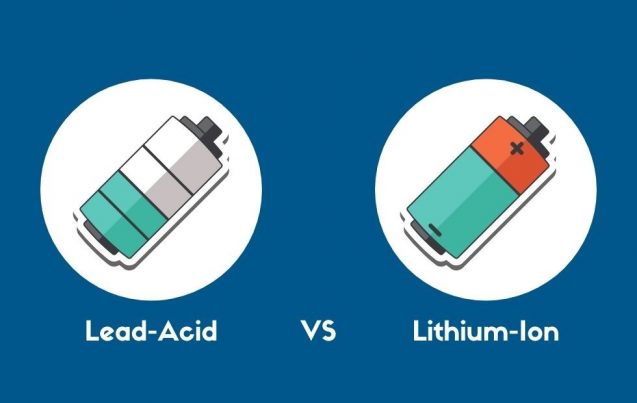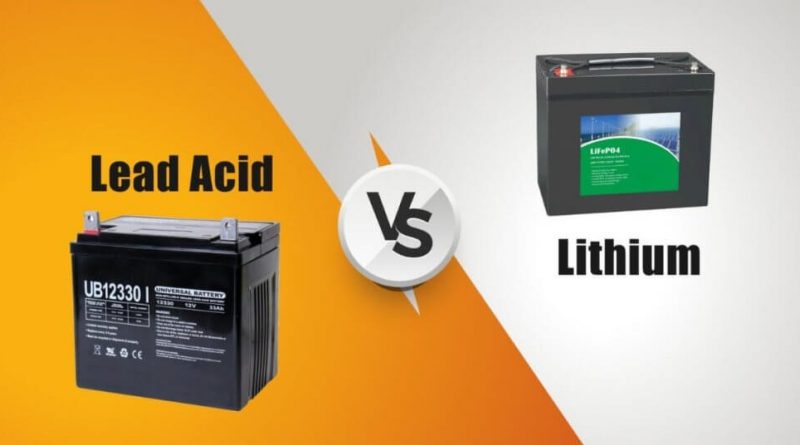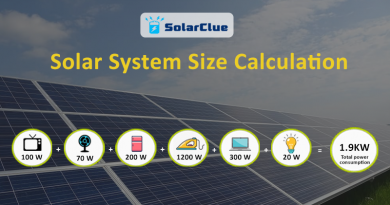Lithium-ion Battery Vs Lead-acid Battery for Solar Usage
When it comes to choosing the battery for your solar application, you would like to know about a list of conditions such as its voltage efficiency, capacity requirement, and many more. With the development of renewable energies, battery storage for domestic/commercial use is going up rapidly, and two technologies such as Lead-Acid, Lithium-Ion currently competing. But, you may wonder what kind of battery you need to use, be it a Lead-acid or Lithium-ion. There are various factors to consider before choosing a battery for your solar system.

(Image source: Climatebiz.com)
Get a look at the comparison table between Lead-Acid and Li-Ion Batteries Lifetime, given below.
| Lead-Acid Battery | Lithium-Ion Battery | |
| Charging Time | Takes more than 10 hours (slow charge) | Takes 3 hours+ (fast charge) |
| Quality | Less reliable and efficient | More reliable and efficient |
| Cost | Affordable to buy | Very expensive to purchase |
| Cycle Life | 300-500 cycles | 5,000 times or more |
| Maintenance | High maintenance | Less maintenance |
| Service Life | 25% | 100% |
| Applications | Suitable for limited industries | Suitable for all industries |
| Weight | 30Kg for kWh | 6Kg for kWh |
1. Working Principle
This blog will take you with a side-by-side comparison of both options (battery)!
Whether it is a Lead-acid battery or a Lithium-ion battery, they both function in the same working principle based on electrochemistry (as both types of batteries store (charge) and release (discharge) electrons (electricity) through electrochemical reactions). Both of them are featured with the parts such as Two electrodes: Anode (-), Cathode (+), Electrolyte, Membrane separator, etc.
But, both of the batteries (Lead-acid and Lithium-ion) differ from each other as per the material used for each battery type:
| Lead-Acid | Lithium-Ion | |
| Anode | Pb | Carbon |
| Cathode | PbO2 | Lithium Oxide (LiFePO4, LiCoO2, LiMn2O4) |
| Electrolyte | H2SO4 (liquid, gel) | Lithium salt (liquid, solid, gel) |
2. Best Capacity
When it comes to measuring the capacity between Lead-Acid and Lithium-Ion, weight is the optimum factor. Lithium-Ion batteries are comparably lighter than lead-acid like up to 6 times for the same capacity, more compact, and up to two times more powerful.
If we compare both the batteries’ capacity, Lithium is the lightest one as one kg of lithium contains 29 times more atoms than lead plus the working voltage of Lithium-Ion is 3.2V vs 2V for lead-acid and as a result, you can store much more energy in 1kg of lithium battery than in lead-acid.
Have a look at the below-given table that summarizes the energy storage capacity of both technologies.
| Lead-Acid | Lithium-Ion | |
| Storage capacity theory | 167 Wh/kg | 11’600 Wh/kg |
| Storage capacity practice | 30 – 40 Wh/kg | 110 – 250 Wh/kg |
| Energy density | 80-90 Wh/l | 250 – 670 Wh/l |
| Specific power | 180 W/kg | 250 – 340 W/kg |
Table of Contents
3. Cycle Life
When it comes to batteries’ cycle life for any kind of solar usages, Lead-acid batteries achieve just 600 or lifetime cycles, whereas Lithium-ion batteries can hit 900 to 1100. Cycle life in lead-acid batteries is highly dependent on the level of discharge (how much it uses for power appliances). What is cycle life? Cycle life is something, which means how much capacity you use before recharging a battery.
When you discharge a battery or use it to power your appliances, then charge it back up with your solar panels, and this process is defined as one/single charge cycle. Thus, the lifespan of batteries is measured not in the months or years they are used, but in terms of how many charge cycles, they can handle before they expire. For example, a sealed lead-acid battery may bear 100 cycles in 4 years at a home when the family is on holiday, whereas the same battery might endure 500+ cycles in one year at a full-time residence.
4. Efficiency
When it comes to efficiency, Lithium-ion batteries are more effective (your batteries charge faster) as compared to Lead-acid ones, which means more of your solar power is stored as well as used. Lead-acid batteries are made in such a way that have 80 to 85% efficiency based on the condition and the model, whereas Lithium-ion batteries have more than 95% efficiency. For example, if you have 1,000 watts of solar energy that coming into the batteries (Lead-acid), there are only 800-850 watts available after the charging and discharging process. Similarly, if you have 1,000 watts of solar energy coming into the batteries (Lithium-ion), which means you’d have over 950 watts of power available.
5. Environmental Impact
As far as the environmental impact is concerned, solar lithium-ion batteries are the superior option. Lithium-ion batteries are sourced from mining, and a lesser quantity of material is used in the manufacturing process to provide the solar storage capacity that minimizes the impact on the environment. But Lead-acid batteries require a higher amount of raw materials (as compared to lithium ones) even though to provide a similar level of solar energy storage capacity and more usage of raw materials mean a bigger carbon footprint, which maximizes the impact on the environment.
6. Durability
Durability is one of the most important factors that come first before you consider buying solar batteries like any other product. If we compare both categories of batteries, Lithium batteries are more durable as they have increased their life duration (over the last 10 years), and they come with warranties as high as 10,000 cycles or 10 years (70%+ of initial capacity). But, Lead-acid batteries come with only 5 years of good service (when discharged at 50% of their maximum capacity) the life duration is extremely low, let’s say, if these types of batteries are deeply discharged at each cycle (80% or more), your lead-acid battery will only work well for 350 cycles or one year.
7. Safety
When it comes to knowing about the safety of both categories of batteries (Lead-acid and Lithium-ion), both contain hazardous material that could hamper both the users as well as the environment. However, most of the lead-acid batteries available now are Valve Regulated (VRLA) and maintenance-free, and for this reason, they are considered safe to use. Similarly, lithium-ion batteries are highly flammable when in contact with air (Battery Management Systems (BMS) that make sure there is no overcharge/discharge).
But then, to make their products safe, manufacturers are technologically advanced in implementing different strategies précised in the table below:
| Risk | Safety equipment | |
| Lead-acid | Spilling of acidic electrolyte, Release of highly toxic H2S gas | Electrolyte as a Gel or absorbed on a glass mat (AGM), Valve Regulation
|
| Lithium-Ion | Fire/explosion | Airtight packaging, Battery Management System (BMS), Solid electrolyte |
8. Cost
When it comes to costs, lead-acid batteries are inexpensive than lithium-ion ones. A lead-acid solar battery system may cost thousands of rupees less than a lithium-ion battery. This particular solar battery is the best choice for those with restricted capital to invest in. However, it’s important to remember that lithium-ion batteries are at par or cheaper than lead-acid ones when it comes to the adjustment for cost over the lifecycle. Let’s have a look at the example given below in the table:
| Lithium-ion 12V, 100Ah | Lead-acid 12V, 100Ah | |
| Upfront cost | 739.99 USD / 55,302.78 INR | 174.99 USD / 13,073.77 INR |
| Depth of discharge | 80% | 80% |
| Total number of cycles | (10 years) – 3600 cycles | (2 years) – 700 cycles |
| Total kWh over lifetime | 3’456 kWh | 420 kWh |
| LCOS | 0.214 USD/kWh | 0.417 USD/kWh |
Over to You
Both the battery technologies, be it a Lead-Acid or Lithium-Ion, we have discussed in this article have their advantages and disadvantages, and you can decide which solar battery technology is better ultimately depending upon your requirements and budget. If you’re looking into energy storage solutions for a solar power system, and want to learn more about the properties of lead-acid and lithium batteries, Solarclue.com/contact.





the blog was very informative and helpful i came across many new things